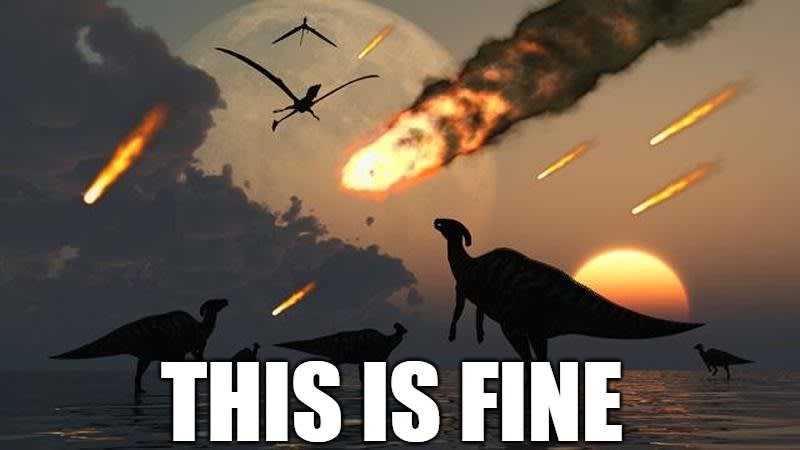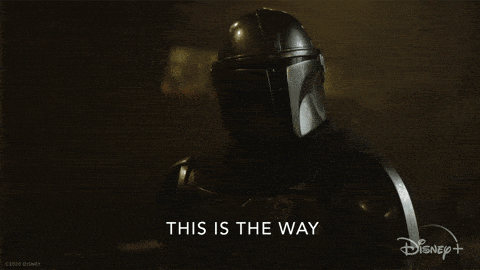Like the asteroid that took out the dinosaurs, news of the cancellation of The Late Show with Stephen Colbert hit the entertainment industry with a force. And like archaeologists sifting through the debris, TV pundits are trying to piece together how it happened.
The cynical theory is that CBS’s parent company, Paramount Global, used Colbert as a sacrificial lamb while in talks to achieve a merger under the Trump administration. Colbert has been an outspoken critic of the President, so his dismissal was seen by many as a way to curry favour. A similar theme has been suggested for Jimmy Kimmel’s recent suspension. However, the decision to also end the Late Show brand pokes massive holes in this conjecture.
The more prominent theory at the moment is that, despite being at the top of traditional late-night show ratings, Colbert’s show was haemorrhaging money. Supposed insiders claimed that the show lost around 40 million dollars per year. Compared to the golden era, being at the crest of late-night viewership today is akin to being the tallest dwarf in the room.
Amidst lower ratings and severe cost-cutting across the medium, the blame has now shifted to a variety of factors related to the hosts.
Unlike most online takes, I don’t think this overall drop-off has anything to do with the hosts. I believe the issue lies on the cultural level and is linked to the format itself.
In the past, late-night was a jack of all trades — comedy routines, sketches, celebrity interviews, music performances— but with the dawn of the internet, it has emerged as a master of none. This theme has played out twice before, with two major predecessors of late-night: vaudeville and variety shows.
Exploring how it happened in the past can help contextualise what is happening in the present and predict what will happen in the future.
Around the start of the 1900s, before television and radio became mainstays in America, the most popular form of entertainment was a live performing art called vaudeville. The art form reigned by bringing Americans together to watch a set of unrelated entertainment acts: comedians, singers, dancers, acrobats, actors, animal tamers, magicians and other novelty acts.
Audiences could pop in for a short period to see their favourite performer’s signature act or watch the entire show. Popular entertainers like Harry Houdini, Sammy Davis Jr, Charlie Chaplin and Bob Hope got their start in the format.
It shared similar aesthetics with the circus or burlesque scene, but differentiated itself in two key ways. Compared to burlesque, it aimed to attract a wider, respectable and mainstream audience, and instead of performing in hastily set-up tents like a circus, vaudevillians performed in highbrow theatres.
The vaudeville format was eventually adapted for radio, which established a structure featuring a star as host, guests from the entertainment world, and a band. Further experimentation led to the introduction of studio audiences to simulate live reactions.
As the variety format from vaudeville gained traction on radio, vaudeville in person began to die out. The Great Depression hastened this, and the birth of motion pictures put the nail in the coffin. Audiences’ tastes (and wallets) were more suited for free radio shows, cheaper motion pictures, musicals, jazz clubs and other more specific mediums.
Eventually, most of vaudeville’s talent migrated into these media as well. However, vaudeville’s variety format found its way to the small screen. This is likely because early television producers needed to fill airtime with content that had a broad appeal—the bet on a variety format paid off.
The first hit variety show was Milton Berle’s Texaco Star Theatre, in 1948, on NBC (later named The Milton Berle Show). It captivated audiences with its frenetic energy, visual comedy, and parade of guest stars.
Berle’s show commanded such an astonishing percentage of the viewing audience on Tuesday nights that he earned the nickname “Mr Television”. His show was credited with helping to double the number of TV sets in American households.
The king of the golden era was Ed Sullivan’s Toast of the Town (later The Ed Sullivan Show), which also premiered in 1948 but survived until 1971. The show featured an eclectic mix of music, comedy, dance, and theatrical acts that appealed to millions of viewers each week.
Despite Sullivan’s stiff and awkward on-screen presence, his exceptional eye for talent made the show a launching pad for countless performers, including Elvis Presley, Louis Armstrong, Duke Ellington, and Diana Ross. His show featuring the Beatles drew 73 million viewers and played a part in igniting “Beatlemania.”
Variety shows thrived during this time because they were relatively cheap to produce, could attract broad audiences across all age groups, and suited an era when most American families owned only one television set that had just three networks to choose from: ABC, CBS, and NBC. CBS alone generated over $100 million in advertising revenue from variety shows through Arthur Godfrey in the 1950s.
However, around the 1970s, variety shows began to die out. A core reason for the genre’s demise in the US was the rise of cable television and changing audience tastes. By the time the 1980s came, cable had thoroughly fragmented the viewing audience by offering specialised channels targeting specific demographics: sports fans had ESPN (1979), movie lovers had HBO (1983), and news watchers had CNN (1980).
With channel options expanding, variety shows could no longer appeal to everyone simultaneously. Viewership dropped, profit margins followed, and the genre disappeared. To many, sitcoms and late-night television took it’s place.
With the death of vaudeville and variety shows, you can observe how new technologies change the economic landscape of media and narrow viewers’ tastes. With vaudeville, it was motion pictures, and with variety shows, it was cable TV. With late-night, it’s playing out over the internet and social media.
Based on Insights from LateNighter.com, despite increasing production costs, late night is generating progressively lower revenue. Compared to the revolutions of old, bolstered by a network-backed change in content, a decentralised plethora of social media creators have taken over spaces late-night used to dominate for exposure and entertainment.
In my prior article, I discussed how online podcasts replaced the long-form late-night interview. In shorter-form interviews, Late Night interviews are also being boxed out by numerous entertaining, lower-budget online shows, often with a gimmick as a hook. Popular ones include Chicken Shop Date, Hot Ones, and Ziwe.
In the heyday of late-night, performing on a show was the pinnacle of a comedian’s career and provided essential ground for national exposure. Now, most comedians can get more exposure by posting clips on TikTok, Instagram, or YouTube and appearing on other comedians’ podcasts on YouTube or Spotify. Joe Rogan’s Podcast alone has more listeners than any late-night host could dream of.
Late Night also used to be the marquee television platform for musicians to showcase their talent to a mass audience, but now, numerous online outlets have taken its place. The most prominent outlets are COLORS and Tiny Desk Concerts. What sets them apart is how minimalistic the aesthetic and acoustics of the performances are. They create a uniquely intimate atmosphere that’s felt even online.
These and other areas of comedy and entertainment that late-night used to hold on TV exclusively have been burst open thanks to the internet.
If Seth Meyers just had a news satire show with day drinking interviews, Fallon a musical impressions show, Kimmel a sketch or prank show and Colbert an intimate podcast alongside acting, they wouldn’t receive as much scrutiny as they do now. Unfortunately, they occupy a cultural institution built on the legacy of Johnny Carson, who succeeded when American culture was much more homogeneous.
The issue with current late-night shows is that they operate on a business model of mass appeal, but today’s attention economy is built on niches. As the economics of late-night become more dire, I expect more of the remaining late-night hosts to either retire, reformat their shows or eventually get kicked out.
Many late-night talents are realising this and are taking the first option. Subconsciously, most have to admit that the internet, social media and streaming services offer more creative freedom to make more laid-back, personal and lower-budget projects.
In 2022, Trevor Noah left The Daily Show to have more time to focus on stand-up and later started a podcast. In his announcement, he said, “I realised there’s another part of my life that I want to ... carry on exploring … I miss going to other countries and putting on shows”. Trevor’s predecessor, Jon Stewart, briefly had a different show on Apple+ but now returns to host the Daily Show on Mondays and also has …. You guessed it, a podcast.
In a similar fashion, Conan O’Brien retired, went on to host a podcast, and continued his very eccentric travel show. In 2022, he sold his podcast company to SiriusXM for $150 million. Even the veterans like David Letterman switched things up after retirement. On Netflix’s My Next Guest Needs No Introduction, he exclusively interviews celebrities in a distinctly Letterman-esque format.
People will still attempt to bring back the late-night format, but I suspect many of these attempts will fail (just like they did with variety shows).
Taylor Tomison, who was seen by many as a young, new refresh for late-night, ditched the format after 2 seasons and low ratings. Despite being a hardworking and accomplished comedian by her mid twenties, she stated: “It was just not sustainable for me”.
Netflix has had a few attempts, most successfully on ‘Patriot Act’ with Hasan Minhaj (who now also does standup and has… a podcast). Their latest attempt with Mulaney may work in an entertaining sense, but I don’t see it having the same cultural impact as the late-night shows of the golden era.
One of the few shows that has been able to navigate the internet era and carve out a loyal niche for itself is Last Week Tonight with John Oliver. But as the name implies, it airs weekly. In addition, its main segment is posted to YouTube for free.
It’s more of an internet show featuring one man slowly losing his mind at how absurd the world is than late-night’s typical cool guy entertaining us with jokes. It rarely has guest interviews, musical acts or comedy acts. However, it occasionally entertains audiences in a way only internet culture can appreciate: occasional absurd stunts and star-studded sketches. My favourites are when he founded a real church and performed a musical number insulting Bob Murray for a SLAPP suit.
If late-night does survive, it will probably have to take on a similarly narrow or absurd format. The latter explains why hosts like John Oliver, Conan O’Brien, David Letterman, Craig Ferguson and Jon Stewart have such loyal fans online and in person. When people don’t have a shared reality anymore, the only shared form of entertainment is the absurdity of it all.
I think this cultural AND technological shift more comprehensively explains why late-night is dying. The changes these brought about weren’t easy to predict or plan for.
They emerged subtly within our collective unconscious, driven by an exploding demand for personalised entertainment and a fractured sense of shared reality.
Late night was built on broad appeal, on being general enough to unite a mass audience. Unfortunately, nothing stands out less in today’s ecosystem than being a generalist.
.png)





